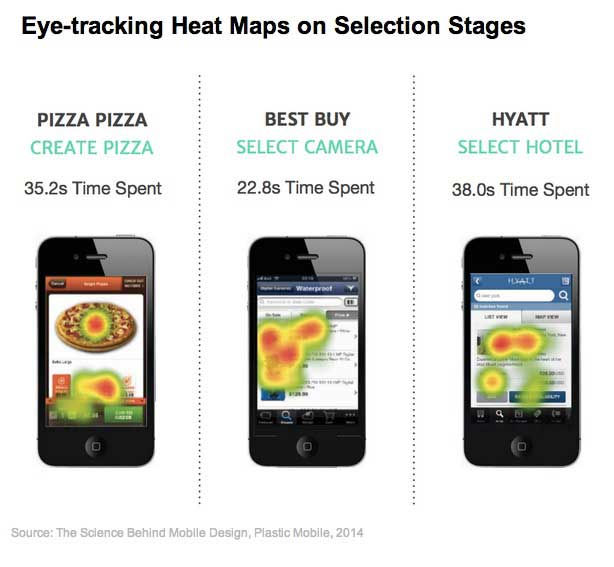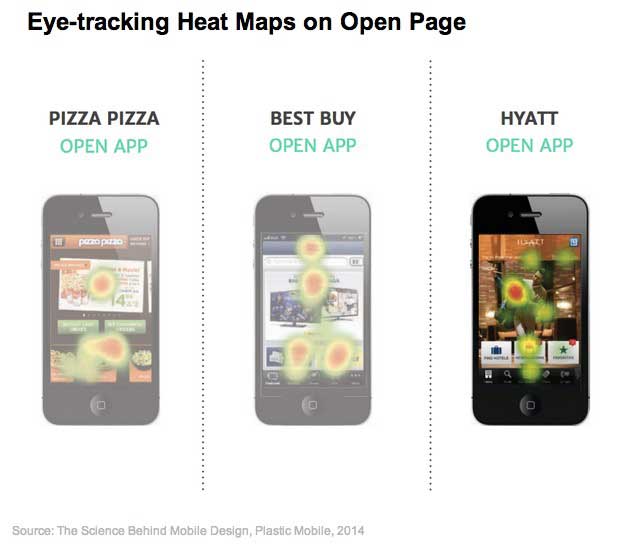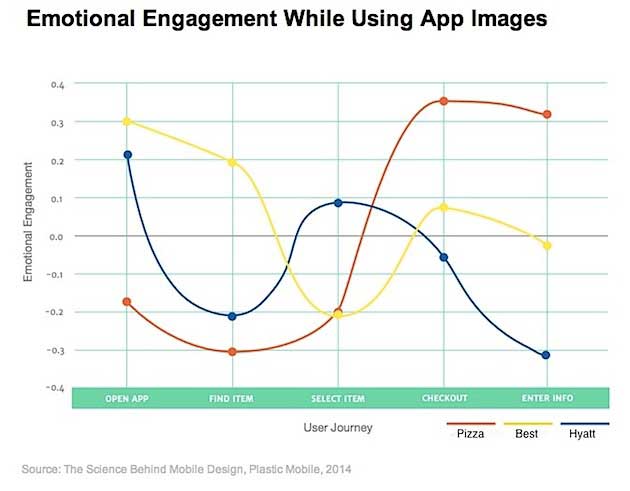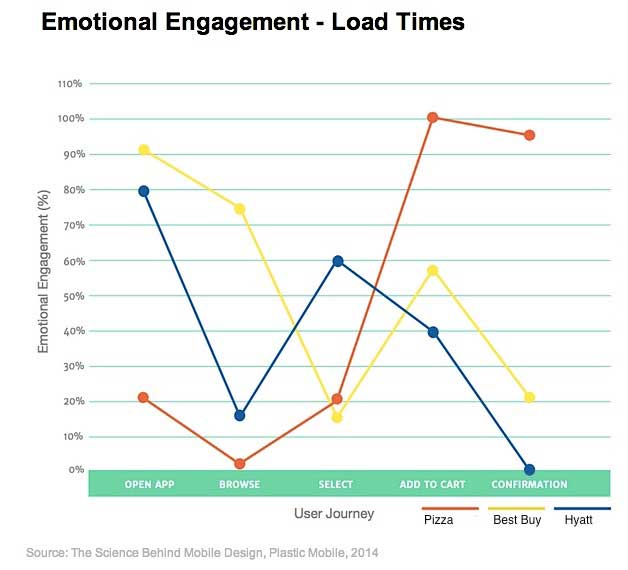Which types of content do people spend the most time viewing on mobile apps? Should publishers present images first? How much does load time impact engagement?
Plastic Mobile recently set out to answer those sorts of questions by examining how consumers interact with the mobile commerce applications of Best Buy, Hyatt, and Pizza Pizza.
The attentional and emotional activity of 30 paid participants (14 men, 16 women) was measured with EEG neuro-headsets and eye-tracking glasses in the study. The researchers observed as the users downloaded and opened the three apps, browsed products and services, went to check out, and made purchases by entering personal information.
Below, key findings from the report.
What People Concentrate On
Participants focused their attention on images and prices during the product selection stage for all three apps. Moreover, the bigger the image was, the more focus was observed:
- For the Best Buy app, participants didn't read the product descriptions, even though they took up half of the screen real-estate. Instead, consumers focused their attention on the images and prices. The average time spent on the selection page was 22.8 seconds.
- Participants spent 38.0 seconds on average on the Hyatt app selection page. Again, users skipped the product information (hotel descriptions) and focused on the images and the prices.
- Participants spent 35.2 seconds on the selection page of the Pizza Pizza app, concentrating their visual focus on pizza images, size selection, and prices.

The Impact of Images
Big images encourage positive emotional and attentional engagement, the study found:
- The Hyatt app opened to a nearly full screen image of people, leading to a spike in emotion and attention (80% and 55% respectively). In a comparison of the three apps phase by phase, the Hyatt app elicited the highest emotional response upon open.
- The emotional peak of the Best Buy app was also at the opening phase, which had images.

- The Pizza Pizza app had the highest level of emotional activation at checkout (100%). When compared with the other checkout processes, the Pizza Pizza app was the most visual of the three and included the most images.

Load Times
Shorter app load times, especially at open, elicited positive emotions from consumers, whereas longer load times caused noticeable frustration:
- The Pizza Pizza app had the slowest load time at 7.2 seconds and opened to a low emotional engagement of 20%. The eye-tracking showed that the focus of users' visual attention was concentrated on the loading icon while they waited for the app to launch.
- The Best Buy app loaded more quickly and opened to a peak emotional engagement of 92%.
- The Hyatt app was the fastest to load at 5.4 seconds, and had a peak emotional engagement of 80% at the app launch. However, the next phase—the Find Hotel function—was slow to load, leading to a severe drop in emotional engagement from 80% to 15%.

About the research: The report was based on data from a study of 30 paid participants (14 men, 16 women), who were measured via EEG neuro-headsets and eye-tracking glasses as they used the Best Buy, Hyatt, and Pizza Pizza mobile applications.




